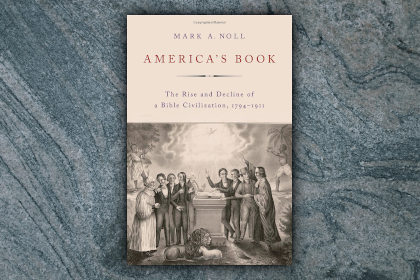The Creation Narrative - Genesis 1 & 2 (Part 6)
Image

Read the series so far.
Image & Function in Genesis 1:26-28
Another significant fact related by these verses is our creation in the image and likeness of God. We cannot here enter into all the debates about the imago Dei, but some few things should be said.
Firstly, God does not say “according to My likeness.” He says “Our likeness.” The “Let us” statement is no plural of majesty, since it appears to be ideational, and is to be understood (I believe) as a statement of plurality in the Speaker. The question arises then, in what way is God a plurality? This question is not fully answered until the NT era. Or, on the other hand, and as much OT scholarship insists, is the plurality meant to convey some sort of heavenly council scene, such as one finds in ANE accounts of the assemblies of gods?
If the latter is the case then one will have to go outside of the Bible for added data to interpret the passage. This indeed is what many scholars in the evangelical community do. But if we pause for a moment and read the context we quickly see that such an interpretation must be wrong; for the Speaker goes on to say, “Let us make man in our own image, according to our own likeness.” And, in line with the words/actions pattern which we have already noted, it says, “So God created man in his own image,” and underscores it right after with, “in the image of God he created him.” That ought to clear up the interpretation.
“Man” (adam) here is plural: “male and female.”1 Both are made in God’s image. There is no hint of a conversation between God and the angels (which would not mirror an ANE council of divinities anyway). Angels are nowhere said to be made in God’s image and likeness. Plus, creation is a grand prerogative of God. Why would the Creator discuss His creative proposals with creatures? Angels have no part in the work of creation (See Isa. 48:11).
The passage also states that man was to be given dominion over “all the earth” not just Eden. This must be kept in mind when we reach chapter 2. The dominion applies to the function of man and woman as God’s image-bearers.
In the third place, just what constitutes the image of God? Again, many today would claim that the image includes the function as well as the constitution of man.2 Unsurprisingly, resort to ANE records features largely in their arguments. But the text appears to make the function contingent upon the image. In other words, man and woman cannot fulfill their function until they are made in God’s image. This would restrict the image to at least our material and immaterial natures.
But then we must enquire whether the image assumes the material part of human beings along with our immaterial natures. Here I think we are on safer ground if we define the image and likeness classically along non-physical lines. If we make the image merely physical we run into the problem of what God looks like. Our difference from the rest of the created realm is not just physical. Fish and birds and cattle and creeping things differ physically one from another as much as we do from them, so it is doubtful that we image God merely physically.3
On the other hand, can we dismiss the possibility that both the soulish and the physical aspects of man image God? Authors Peter Gentry and Stephen Wellum point out that,
the traditional view is inadequate…because it does not come to grips with the fact that “image” normally refers to a physical statue and cannot be exegetically validated as the author’s intended meaning or the first audience’s natural understanding of the text in terms of the ancient Near Eastern cultural and linguistic setting.4
But this begs a rather crucial question. Did Moses report the words God actually spoke in Genesis 1:26-27? Nobody else was around, and certainly God meant what He said in the rest of Genesis 1, as we have seen. That being so, the matter of whether people of the ANE living in or after Moses’ time (ca. the fifteenth century B.C.) thought “image” meant a physical statue is by the bye, and may even be anachronistic. The context will have to tell us. Gentry and Wellum opt for “rulership and sonship” as the image.5 But this leaves us with the problem of the spread of little rulers and sons of God upon the earth. If everyone is a ruler then surely nobody is. (And if “image” equates to sons, what about daughters? In OT times—if we’re insisting on “cultural setting”—daughters did not enjoy the same rights as sons.) The biblical text leans toward thinking of the image primarily as non-physical and the body as the vehicle for the expression of the image in the extended world.
Anticipating the Human Form?
Reading the progression in Genesis 1, we follow a logical as well as a chronological order. Dry ground comes before plants and trees. The plant kingdom is readied before creatures are made to live off them. The apex of the creation week is the fashioning of man from the dust of the ground.6 Man is God’s image-bearer: a stupendous privilege and responsibility, and he is given dominion over what God has just created.
Saying that the world was made for us does not deny that all things were created for the Son (e.g. Col. 1:16). Jesus knew He would take on physical form before He made the physical realm. We must understand here that Jesus Christ is “a Lamb unblemished…foreknown before the foundation of the world” (1 Pet. 1:19-20). He had a human body prepared for Him (Heb. 10:5). Is it really a stretch for a Bible believer to assert that it was always the Father’s intention to make the world so that His incarnate Son would reign upon it? Jesus’ body was, perhaps, in the mind of God, a prototype of the human body7 If that is so we may theorize that the world was fashioned with careful regard to the form and functions of men and women in anticipation of the coming God-man, Jesus Christ the King of kings.
Male & Female Image-Bearers
The corrective teaching about the relative status of men and women in God’s image issues from the partly polemical intent of the Creation account as a correction of the myths about how things came to be, which were current at the time Genesis was written in the middle of the second millennium B.C. When Scripture uses the designation “man” here, the reference is not just to maleness, but also to women. Biblical language does speak of male and female as “man.” The Biblical writers did not entertain the same misgivings about using this term as twenty-first century westerners do. They did not think in terms of gender inclusive language. But the real point is that, as I have said, contrary to ancient Near Eastern pagan religions, the Bible makes both the man and the woman image-bearers of God equally.8 This means that the image of God is not maleness, and this is because God Himself is not male. God as Creator does not have a gender. He is not like those He creates, whose man—woman—children family forms a relational triad which reflects the intra-personal relationships within the Trinity. Still, masculine language is used for God, and it would be quite erroneous to think we could refer to God as “she” when the Bible explicitly calls Him “He” and “Father.”9
Notes
1 I reject out of hand the wild suggestion of liberal scholars that Adam was a kind of freakish hermaphrodite. This is found, e.g. in Don C. Benjamin, The Old Testament Story, and is often used in support of a feminist agenda.
2 One recent study, J. Richard Middleton’s The Liberating Image, 27, equates the image with the function. Later he states, “humanity’s office and role as God’s earthly delegates, whose terrestrial task is analogous to that of the heavenly court…. Imaging God thus involves representing and perhaps extending in some way God’s rule on earth…” (60).
3 As I say this I remain open to certain physical representational views.
4 Peter J. Gentry and Stephen J. Wellum, Kingdom through Covenant, 186. They go on to state that we must “compare and contrast the biblical text with the similarities between the Bible and the ancient Near Eastern background but also the differences, which show the new meaning being revealed by God.” (190). But this is to get it backwards. Genesis 1 is a record of the Creation account. I believe it means what it says, and there was no ancient Near Eastern background to check in Creation week!
5 Ibid, 192
6 I am aware that some scholars believe the “rest” of God on Day Seven is the zenith. While recognizing the threefold repetition of “rest” in the passage I find this a surprising assertion in view of the fact that man is given God’s image and then a custodial responsibility (mandate) over what God had made in the previous days. It also needs to be noted that primarily the Hebrew term Shabbat implies cessation not “rest.” When one remembers the later teaching about Jesus being the second Adam I think this only reinforces what I have said above. God’s “rest” will play a significant role in the Pentateuch and after, but this does not mean it should take attention away from the natural meaning of chapter one. See G. C. Berkouwer, Man: the Image of God, 70
7 See the work by Meredith Kline, Images of the Spirit.
8 Saying this does not mean that we can endorse the teaching of Karl Barth that the image of God is the “I—Thou” relationship (“confrontation”) between ourselves and others. Barth thought this obvious, but most interpreters have not tracked with him. One crucial thing which is often forgotten is that God’s speaking to our first parents assumes that unlike the animals, they understood Him.
9 On this question see further John M. Frame, The Doctrine of God, 378-383.
Paul Henebury Bio
Paul Martin Henebury is a native of Manchester, England and a graduate of London Theological Seminary and Tyndale Theological Seminary (MDiv, PhD). He has been a Church-planter, pastor and a professor of Systematic Theology and Apologetics. He was also editor of the Conservative Theological Journal (suggesting its new name, Journal of Dispensational Theology, prior to leaving that post). He is now the President of Telos School of Theology.
- 30 views

Discussion